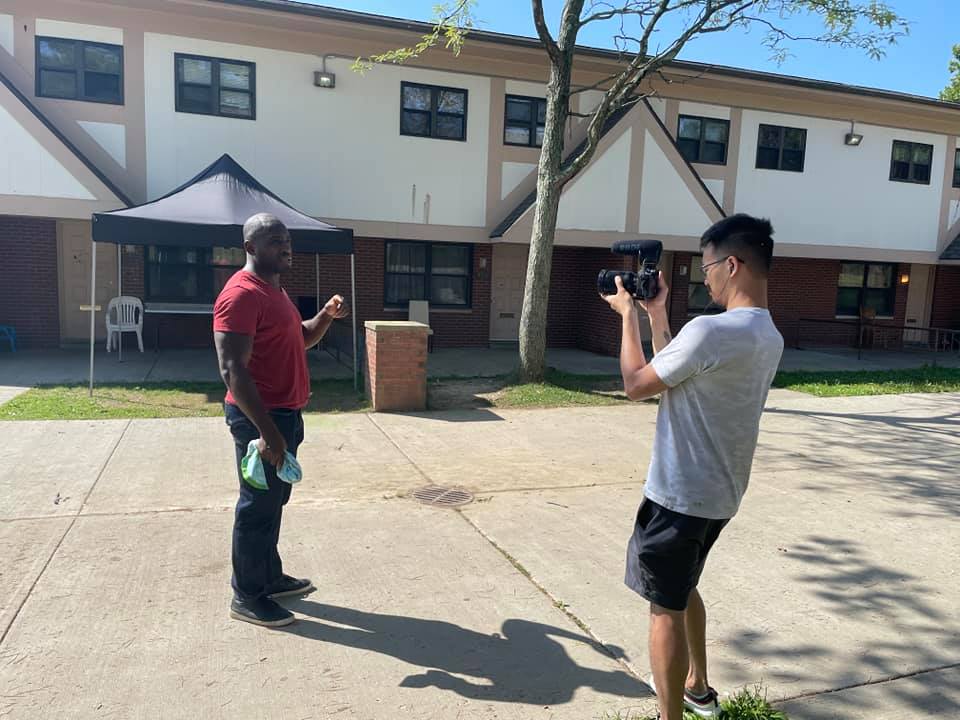I’ve always wanted to speak another language fluently. From a practical standpoint, it opens up more of the world to me, as I can communicate with more people and visit more places. From an intellectual standpoint, I’ve always felt that the ability to communicate in many languages is a sign of intelligence. Lastly, from an ego standpoint, it seems like a very impressive ability.
Growing up, I dabbled in different languages. I took Japanese in high school and a semester of Russian in college. I learned how to read Hebrew and order food in Chinese, picked up some French basics when I met my girlfriend and learned basic conversational Portuguese in Portugal.
While I’ve always dabbled in Spanish, I only recently had the time, energy, and resources to seriously invest in my Spanish skills. While I haven’t attained fluency in that I can spontaneously talk about anything with anyone and understand an entire episode of Narcos without subtitles (a personal goal).
I recently took an online version of the Common European Framework of Reference Languages exam for Spanish. I placed firmly into the B2 level with my knowledge of the language. My speaking and comprehension ability is strong enough that I carried on conversations and solved problems during a recent trip to Puerto Vallarta.
This post is not about what I did to improve my Spanish ability. Instead, it’s about the general methods I’ve discovered along the way for improving the speed at which I acquired communicative skills in Spanish and the efficacy.
Communicating in another language is challenging because you must simultaneously learn vocabulary and grammar to use that vocabulary, how to pronounce it, and how to understand it when it is spoken to you at average conversation speed.
What follows are methods I’ve discovered and used to improve in all of these areas, which have, in turn, made it even easier to use and learn the language.
Learning vocabulary
First, the bad news about learning vocabulary.
There are a lot of words in any given language. Since I’m writing this post in English, let’s use that language as an example. Also, we’ll assume that other languages you learn have approximately as many words as English. This statement isn’t precisely accurate, but it is a concept known as a “lemma.” Before I explain that, let’s cover some basic facts about learning vocabulary using English as our starting example.
The Second Edition of the 20-volume Oxford English Dictionary, published in 1989, contains complete entries for 171,476 words in current use and 47,156 obsolete words. However, you don’t use nearly as many words.
According to testyourvocabulary.com, the average English speaker has a vocabulary ranging from 20,000 to 35,000 words. This number means that the average person only knows 11-20% of the words in English. Learning over 20,000 words is much less intimidating, but it gets even better.
Language lemmas make learn learning easier
A lemma is simply a word family. A word family is a word and all of its derivations and inflections. For example, talked, talk, talking, talks; sleep, slept, sleeping. Speakers of the romance language should immediately recognize this in the conjugation of verbs. Officially, it is said that romance languages have a high degree of inflection, which means there are many ways to conjugate the infinitive of a verb.
Although there are over 50 different forms a conjugated Spanish verb can take, all those conjugations are considered one lemma. For example, “como,” “comes,” “comiste,” “comaba,” “estoy caminando,” etc. are all part of the lemma for comer.
Typically, native speakers of English know between 15,000 and 20,000 lemmas. However, research by University of Wisconsin professor of applied linguist Stuart Webb indicates that you only need to know 800-1000 lemmas to have a conversation with someone in their native language. Furthermore, the lemmas you need to know follow a Pareto style distribution in which 20% of the lemmas you need to know account for 80% of the words you’ll need to use in conversation.
This distribution forms the basis of my strategy for accumulating vocabulary in Spanish. I learned the most common words used in small talk and basic writing. This approach is one of the reasons why using children’s books to learn another language is such a good technique. Children communicate at a basic level and are understood. If you know the exact words they use, you are well on your way to building a base of vocabulary to communicate with.
There are lists all over the internet that break down the most common words in English. You can try to find them for your target language, but I do not believe this is necessary because languages simply express ideas. You would likely have the same ideas in your target language as in your native language.
Learning the most common words in English and their translation in another language is a very powerful way to jump-start your vocabulary acquisition. Another way is to simply pay attention to your thoughts and what you want to express throughout the day. Learn the words for everything you see and do throughout the day. The fact that you commonly watch television or go to the gym will work to solidify the translation of those ideas into your language.
There is no real shortcut to learning vocabulary, but there are some things you can do to make it easier.
Do not learn words alone. Whenever possible, learn the words as part of a phrase or sentence. You’re much more likely to remember the words “car” and “drive” if you learn them in a meaningful sentence like “I drive my car to work” or “I drive my car home.”
Go out of your way to pronounce the words correctly. When you pronounce words correctly, you’re building a habit that will be extremely useful for other parts of our language learning journey, but the primary purpose here is to learn how the word sounds so you can recognize it better when you hear speakers.
Grammar is underrated AND overrated
A lot of people view grammar as a nightmare. They consider it the most complicated and frustrating part of any language. Before I tell you the best way to learn it, let me explain why grammar isn’t the boogie man people try to make it out to be.
First, you have to remember what language is. It’s just a series of symbols and sounds that we’ve given meaning to communicate with one another. For this communication to be valuable and meaningful, it has to follow a set of conventions and patterns. Once you realize a pattern exists, that should give you hope because a pattern means predictability, and predictability means less work.
Everything you learn in a foreign language is grammar. When you think of grammar as something separate from the rest of the language, you’re setting yourself up to view the language as unnecessarily difficult, and humans are psychologically primed to resist and avoid difficult tasks.
Grammar is simply part of the language. More technically, grammar is the formal rules and structure for linking words. Grammar tells us what order the words should go in and what form of the word is required to communicate your ideas.
Secondly, think about how often your English grammar is perfect. The average person is not a high-level literary scholar. Even if they are, only the most pretentious individuals insist on using perfect grammar in every conversation.
Instead, I’ve discovered that most people know enough grammar to not be misunderstood but not so much that they’re writing essays at a college level. This means you can reduce the grammar you learn in your target language to approximately the following ideas.
Verb Conjugation
You can do a lot with knowledge of only the simple present and past tense. While there are many situations with present progressive, past progressive, and imperfect past are more precise, you can communicate in various situations by focusing on how those simple tenses in your target language.
Adjectives
Many languages do not follow the same order we do for adjectives’ placement. In English, we typically place the adjective before the noun it’s describing. While your eventual proficiency in the language needs to know the difference, don’t let your mind focus too much on this. Native speakers will understand you, even if you mess this up. If you doubt this, think about these two sentences:
“The blue car.” and “The car blue”
While you know that the second sentence is incorrect, in a conversational context, you’d know what it means.
Conjunctions, prepositions, and demonstratives
These three are technically different, but if you’re trying to learn the most common words in a language, you’ll have almost certainly come across them in your list.
Conjunctions link different clauses of a sentence or a sentence together (But, because, and, however, etc.)
Prepositions are like conjunctions, except they link ideas together in a sentence (on, under, behind, of, etc.)
Demonstratives show an object’s location relative to the subject in relation to the speaker. (there, here, near, far, etc.)
Pronouns are words that take the place of nouns. Personal pronouns are used to describe living things (he, she, him, her, they, us, etc.), and impersonal pronouns are words that take the place of inanimate objections or when the sex of something isn’t emphasized (it, that, etc.)
You will come across these by learning the most common words and lemmas in your target language because they are so common. They’re so common because they are the building blocks for language.
I’ve left out adjectives and adverbs. That’s because you’ll naturally build a repertoire of useful adjectives from studying your list of common words and doing the Google translator exercise. As for adverbs, they are excellent additions to your language, but they aren’t necessary. Even communication in English is considered low quality if too many adjectives are used.
Speaking
As a skill, speaking proficiency generally follows reading but lags behind comprehension. When you think about how you learned to speak your native language, this order should immediately seem strange.
You understood before you could talk and could talk before you could read. While I believe that adult language learners have many advantages that make it possible for them to (in theory) learn a new language faster than children, (in application) we make it much harder on ourselves than we need to. A big reason for that is that we mix this order up.
It’s natural for us to try to learn a new language this way because school trains many of us to learn by reading, memorization, and regurgitation. However, you simply can’t learn to speak and communicate in a new language this way.
Instead, you need to start speaking your target language immediately. You don’t need to have conversations, but you must start training your mouth to make the new words. If you have access to a tutor to work with you to improve your accent and pronunciation, use them. I highly recommend investing in The Pimsleur Method or The Michael Thomas courses if you don’t.
These courses focus on learning by speaking with spaced repetition. They also do a great job teaching you the basics of vocabulary, but most importantly, you’re learning to say the words the way a native speaker would.
In addition to these courses and working with a tutor, you can develop your ability to speak by listening to 10-second clips of your native language spoken and then trying to repeat exactly what was said exactly how it was said, mimicking the speaker’s intonation. There are many videos on YouTube with people speaking almost every imaginable language.
Speaking is the second most challenging area for many second language learners to develop. The main reason is that people treat learning languages like learning history. You can’t just study them. You have to live them, and through that, you learn them.
Another big reason people have trouble developing the ability to speak is that they feel awkward trying to talk with the correct accent. They feel self-conscious making new sounds in a foreign language, and for two reasons: they feel like native speakers will judge their attempts negatively or that speakers of their own language will judge them.
Let’s put those fears to rest. For speakers of your target language, every attempt is appreciated. The reality is that developing a proper accent makes everyone more likely to interact with you, and it makes it easier for them to understand you. As for your worries about people making fun of you or judging you for your accent, remember that you’re attempting to do something that most people will never try and would love to be able to do.
Listening
Understanding a foreign language when spoken to you is often the most challenging part of learning another language. For many of us, the first breakthrough comes when we hear a stretch of conversation and actually comprehend what’s being said.
Most of what I’ve learned about improving my listening comprehension has come from Iadhosa Ness of the Mimic Method. It’s a fantastic program that I used to dramatically increase my listening comprehension for Spanish.
I’ve also developed several methods on my own that have helped improve my comprehension of the language during a real-time conversation. The following are the most powerful tips for improving your listening comprehension in another language:
Develop your accent
Your accent is just training your mouth to recreate the sounds of your target language correctly. This means mastering the intonation and stresses of the word. The better you get at creating the right sounds, the more easily you’ll hear them when people speak to you.
Focus on sounds, not words. Too often, we try to hear new words in a foreign language rather than listen to their sounds. What I mean by this is that you read a word, and you think it should sound exactly the way you’re taught to pronounce it–and that’s if you even learned how to pronounce it correctly from a native speaker. The reality is that there’s a difference (often significant) between how a word is read or officially pronounced and the way it’s used in conversations.
Dictate, don’t translate. One of the best exercises you can do to improve your comprehension is to listen to 15-30-second clips of your target language being spoken, then try to write it down. Don’t focus on translation. Just try to capture words. The idea is to train your ear to ear to hear what is being said. Many people have trouble with listening comprehension because they simply aren’t hearing the words being said as they’re pronounced. Dictation is the best way to do this.
Stop translating word for word
Translating word for word is one of the word habits you can develop. It will tremendously slow down your ability to understand chunks of information simultaneously, which is the ultimate goal. I have a simple exercise for you that should help in this area.
Listen to 15-30 seconds of spoken material in your target language. This time, though, write a short and detailed summary of what you just listened to instead of dictating the sounds and words. Afterward, get the translation of the text and see how closely your description matched what the speaker was talking about.
After doing this a few times, you will get a better feel for how the language sounds and how ideas are expressed in it. This is key because one of the biggest problems with word-for-word translation is that many languages express the same idea but with different word order, usage, and phrasing.
Material selection for study
Working through complete articles and videos, no longer than 2000 words or 4 minutes, works best. That’s long enough to push your mind but short enough to not exhaust you. Also, the added bonus is that any decent piece on a subject will repeatedly use the same vocabulary and be written or spoken in the same tense. This makes it easier to grasp the sounds and learn more words.
This basic framework will help you quickly aquire any language you wish to study that is based on the roman alphabet.




